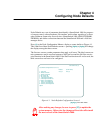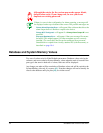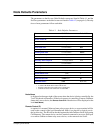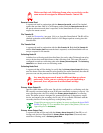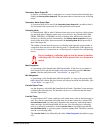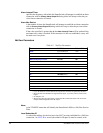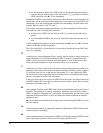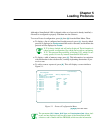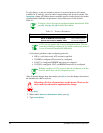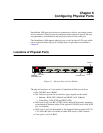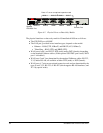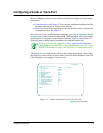
4-8 SmartSwitch 1800 4.0 User Guide, Rev 01
●
An Information or Supervisory LPDU with an N(
R
) greater than the last N(
R
)
received and less than or equal to the line station's V(
S
), provided a Command
LPDU with P bit set to
B
'
1
' is not outstanding.
If additional LPDUs are set from the remote link station after the local station has reset
T1
, the timer will be restarted if acknowledgments of or responses to those LPDUs are
outstanding. If no acknowledgments/responses are outstanding, the link station will
start the inactivity timer. (See "
Ti
" later.)
If
T1
expires and acknowledgments/responses are still outstanding, the link station
will send one of the following, then restart
T1
:
●
A Supervisory LPDU with the P bit set to B'1' (to solicit remote link station
status).
●
Any Unnumbered LPDUs that were not responded to the first time they were
sent.
If acknowledgments/responses are still outstanding after
N2
tries (see "
N2
"), the link
station will declare the link inoperative.
The value specified for
T1
should allow for any delays introduced by the MAC sub-
layer (e.g., queuing).
T2
is the Receiver Acknowledgment Timer, used by the link station to delay sending an
acknowledgment of a received Information LPDU. The timer is started when the
LPDU is received and reset when the acknowledgment is sent. If the timer expires
before the acknowledgment is sent, it must be sent as soon as possible.
Ti
is the Inactivity Timer, used by the link station to detect an inoperative condition in
either the remote link station or the transmission medium. The timer will be started if
T1 has been reset (for one of the reasons listed under "
T1
"), and additional LPDUs
have been sent by the remote link station, and there are no outstanding acknowledg-
ments or responses from the local link station.
If the local station does not receive an LPDU before
Ti
expires, the station must send
an LPDU with the P bit set to
B
'
1
' to solicit the remote station's status. Recovery then
proceeds as described under "
T1
."
N3
is the number of Information LPDUs that will be received before sending an acknowl-
edgment. This parameter is used in conjunction with
T2
to allow stations to reduce
traffic. A counter is initialized to N3, and will be decremented by one each time a valid
sequential Information LPDU is received. When the counter reaches
0
an acknowl-
edgment is sent.
N3
is reset whenever an Information or Supervisory acknowledgment LPDU is sent by
the local station.
Tw
is the maximum number of sequentially numbered Information LPDUs that the link
station can have outstanding.
N2
is the maximum number of times that an LPDU (including Information LPDUs resent
after a checkpoint operation) will be sent following expiration of
T1
.




